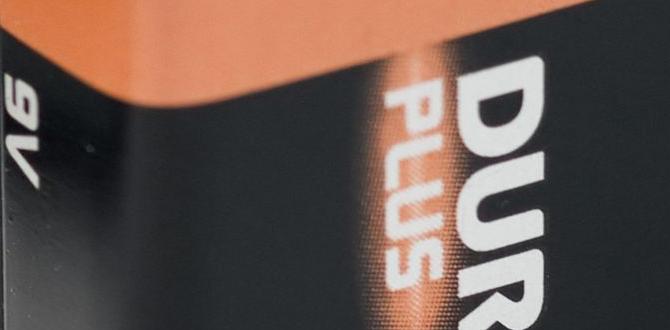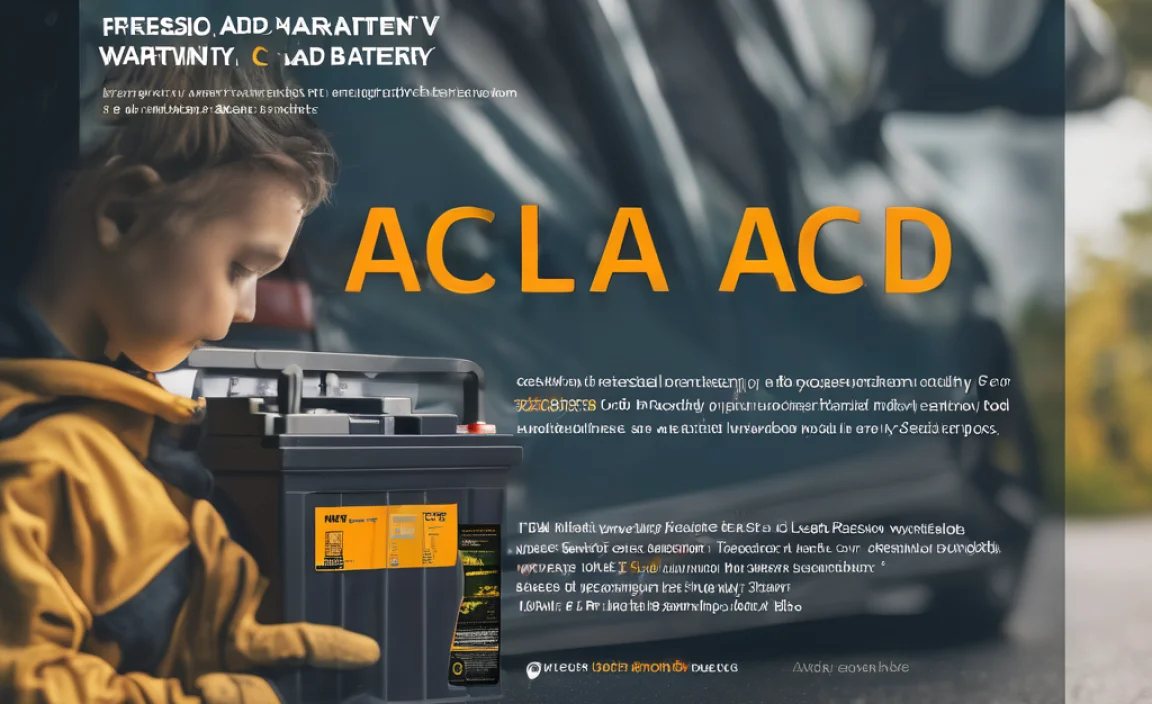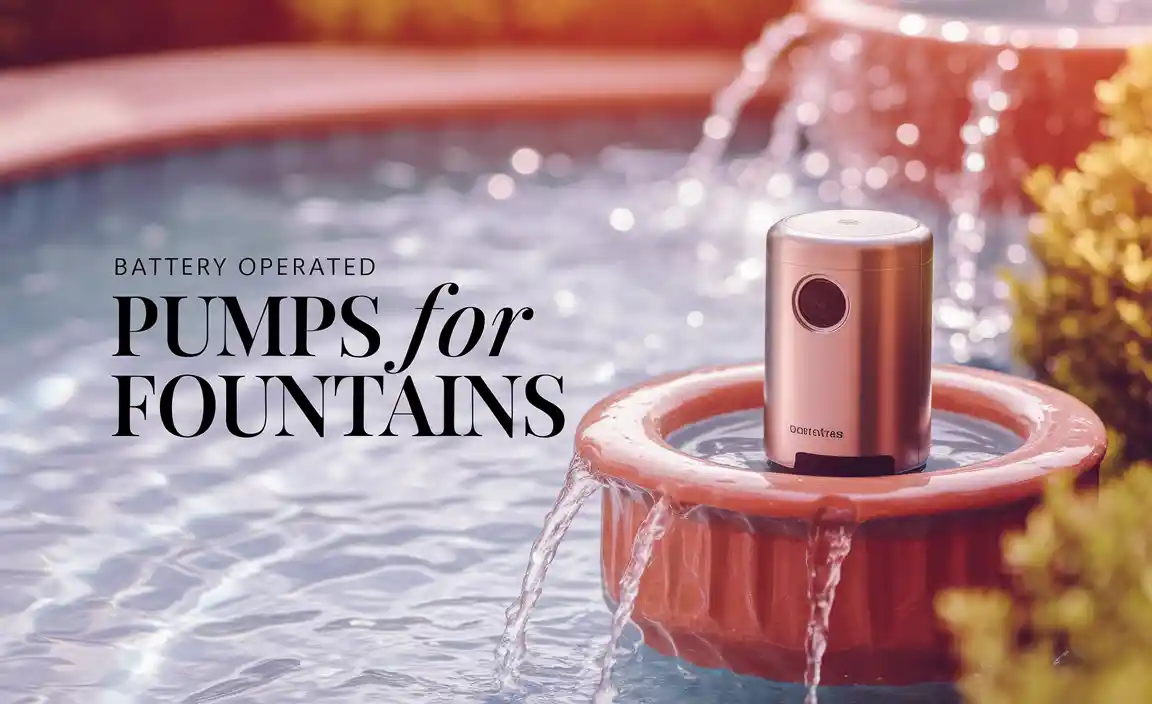Upgrade your Traxxas with a LiPo battery for more speed and longer run times. This guide makes choosing and using LiPo power simple and safe for beginners.
Ever feel like your Traxxas RC car could go faster or last longer on the track? You’re not alone! Many RC enthusiasts hit this point and start looking for ways to give their rigs that extra boost. The good news is, there’s a fantastic upgrade waiting for you: a LiPo battery specifically designed for Traxxas vehicles. Don’t let the technical terms scare you; this guide is made for beginners. We’ll walk you through everything you need to know, from understanding LiPo basics to picking the right battery and keeping it safe. Get ready to supercharge your RC fun!
What is a LiPo Battery and Why Upgrade?
LiPo stands for Lithium Polymer. These batteries are a popular choice for high-performance electronics, especially RC cars, because they pack a lot of power into a small, lightweight package. Compared to older battery types, LiPos offer:
- Higher Voltage: This means more power delivered to your motor, resulting in faster acceleration and higher top speeds.
- More Capacity: Often measured in milliamp-hours (mAh), a higher capacity means your RC car can run for a longer time before needing a recharge.
- Lighter Weight: Less weight on your RC car means it can perform better, handle more efficiently, and feel more agile.
For your Traxxas, upgrading to a LiPo battery is one of the most impactful improvements you can make. It’s like giving your car a second heart that beats stronger and lasts longer!
Understanding LiPo Battery Basics for Your Traxxas
Before you dive in, let’s cover a few key terms. Knowing these will help you choose the right LiPo battery and use it safely.
Cell Count (S)
LiPo batteries are made up of individual cells, each providing a certain voltage. The “S” number tells you how many of these cells are linked together in series. More cells mean higher voltage, which means more power for your Traxxas.
- 2S LiPo: This is the most common starting point for many RC cars, including some Traxxas models. It offers a good balance of increased performance and manageable voltage.
- 3S LiPo: This provides even more power than a 2S, leading to significantly higher speeds. Some Traxxas vehicles are designed to handle 3S power, but always check your model’s specifications to avoid damage.
- Higher Cell Counts (4S, 6S, etc.): These are for very high-performance or specific racing applications. They deliver extreme power but require compatible vehicles, ESCs (Electronic Speed Controllers), and careful handling. For most beginners, sticking to 2S or 3S is recommended.
Capacity (mAh)
Capacity is measured in milliamp-hours (mAh). Think of it like the size of the “fuel tank.” A higher mAh rating means the battery can supply power for a longer time.
- For example, a 5000mAh battery will generally last longer than a 3000mAh battery, assuming all other factors are equal.
- When choosing, consider how long you want to run your Traxxas and if you’ll want to swap batteries for continuous play.
Discharge Rate (C Rating)
The “C” rating tells you how quickly a battery can safely discharge its power. A higher C rating means the battery can deliver more current, which is important for high-performance applications like RC cars that demand a lot of power instantly.
- Low C-rating: Might struggle to supply enough power, leading to sluggish performance or even damage to the battery or ESC if overworked.
- High C-rating: Can deliver power quickly without overheating or stressing the battery.
- For most Traxxas RC cars, a C rating between 50C and 100C is usually a good bet. Always check your Traxxas model’s manual for recommendations. If in doubt, go slightly higher.
Connectors
LiPo batteries use various connectors. Traxxas often uses its own proprietary “iDT” (iD Technology) connectors, which are great for automatically identifying battery types and setting charge parameters on compatible Traxxas chargers. However, many aftermarket LiPo batteries might come with standard connectors like Deans (T-Plug) or XT60. You might need an adapter if your battery and ESC connectors don’t match. To be safe and simplify charging, many users opt for batteries with Deans or XT60 connectors and then upgrade their ESC to match.
Choosing the Right LiPo Battery for Your Traxxas
Picking the best LiPo battery for your specific Traxxas model can seem tricky, but a few key considerations will guide you. The goal is to find a battery that fits your car, your charger, and your driving style.
1. Check Your Traxxas Model’s Specifications
This is the most important first step! Your Traxxas manual or the official Traxxas website will tell you what types of batteries are recommended and supported for your specific model. Look for:
- Supported Cell Count (2S, 3S): Some models can only safely handle 2S LiPo batteries, while others are designed for more power and can use 3S. Using a battery with too high a cell count can damage your motor or ESC.
- Recommended Capacity (mAh): While you can often use batteries with slightly different capacities, sticking close to the recommended range ensures proper fit and performance.
- Maximum Discharge Rate (C): Your manual might suggest a minimum C rating.
- Physical Size Dimensions: LiPo batteries come in standard “hard case” sizes. Make sure the battery you choose will physically fit in the battery tray of your Traxxas. Common sizes include 2S and 3S “shorty” packs or “standard” packs.
2. Consider Your Charger
LiPo batteries require a specific LiPo balance charger. If you already own a Traxxas charger with iD technology, you’ll want to look for Traxxas iD LiPo batteries to take full advantage of its features. If you have a different brand balance charger, check its specifications for the maximum cell count and charge current (amps) it can handle. You’ll need a charger capable of charging the cell count (2S, 3S) and capacity (mAh) of the LiPo battery you plan to buy.
For example, if you plan to charge a 5000mAh 2S LiPo battery, ensure your charger can handle 2S packs and can charge at a rate of at least 5 amps (which is a 1C charge rate for a 5000mAh battery).
3. Think About Run Time and Performance
Do you want to race for longer? A higher mAh battery will give you more run time. Do you want more speed? A higher cell count (if your car supports it) and a good C-rating will give you that adrenaline rush.
Beginner Tip: For your first LiPo upgrade, a good quality 2S LiPo battery with a capacity around 4000-5000mAh and a C-rating of 50C or higher is usually a safe and effective choice for most Traxxas vehicles that come with NiMH batteries.
4. Hard Case vs. Soft Case
LiPo batteries come in two main types of “cases”:
- Hard Case: These are encased in a rigid plastic shell. They offer excellent protection for the LiPo cells inside, making them ideal for rugged RC applications where impacts are common. Most Traxxas-compatible LiPos are hard-cased and designed to fit standard battery trays.
- Soft Case: These have a flexible, protective film around the individual cells. They are generally lighter and can sometimes offer more flexibility in fitting into tight spaces, but they are more vulnerable to physical damage. For Traxxas cars, hard cases are usually preferred for durability.
Table: LiPo Battery Selection Guide
| Feature | Beginner Recommendation | Advanced User / More Power | Things to Check |
|---|---|---|---|
| Cell Count (S) | 2S (7.4V) | 3S (11.1V+) | Your Traxxas model’s ESC and motor rating. Never exceed recommended voltage. |
| Capacity (mAh) | 4000-5000mAh | 5000-7000+mAh | Physical dimensions to fit the battery tray, desired run time. |
| Discharge Rate (C) | 50C – 75C | 75C – 100C+ | Your Traxxas model’s ESC and motor power demands. Higher C is generally better. |
| Connector Type | Traxxas iDT (if using Traxxas charger), Deans (T-Plug), XT60 | Deans (T-Plug), XT60, IC5/IC3 | Match your ESC or use adapters if needed. |
| Case Type | Hard Case | Hard Case | Durability and fit in battery tray. |
Always refer to your Traxxas vehicle’s manual for the most accurate specifications and recommendations. Manufacturers like Traxxas offer their own line of LiPo batteries that are designed to work seamlessly with their vehicles and chargers.
Essential LiPo Charging: Safety First!
Charging LiPo batteries is different from charging older battery types, and safety is paramount. LiPo batteries can be dangerous if mishandled, overcharged, discharged too low, or punctured. Always follow these critical safety guidelines:
1. Use a LiPo-Specific Balance Charger
Never try to charge a LiPo battery with a charger that isn’t specifically designed for LiPo batteries. Your charger must have a balance charging mode. This mode ensures that each cell within the battery pack is charged to the same voltage, preventing overcharging of individual cells.
The Traxxas EZ-Peak Dual Charger is a great example of a LiPo-compatible charger that offers convenience and safety features.
2. Always Charge on a Fire-Resistant Surface
LiPo charging should always be done on a non-flammable surface. Use a fire-resistant charging bag (also known as a LiPo safe bag), a concrete floor, or a metal tray. Never charge in your car, on wooden surfaces, or near anything flammable.
3. Balance Charge Every Time
As mentioned, the balance charge feature is non-negotiable. It ensures the health and safety of your battery. Connect the balance lead of the LiPo to the charger’s balance port in addition to the main power connector.
4. Never Leave Charging Batteries Unattended
Stay in the same room and keep an eye on your battery while it’s charging. If you notice any swelling, unusual heat, or strange smells, disconnect the charger immediately and move the battery to a safe outdoor location away from combustibles. Let it cool down and then research how to properly dispose of a damaged LiPo.
5. Set the Correct Charge Rate (Amps)
The charge rate is usually expressed as a “1C” charge. For a battery with a capacity of ‘X’ mAh, a 1C charge rate is ‘X’ amps. For example, a 5000mAh battery should ideally be charged at 5.0 amps.
Most LiPo batteries can be safely charged at 1C. Some batteries are rated for 2C or even higher, meaning they can be charged faster. Always check the battery manufacturer’s recommendation. Charging too fast can damage the battery and increase risk.
Calculation Example: For a 4000mAh (4Ah) LiPo battery, a 1C charge rate is 4.0 Amps.
6. Do Not Over-Discharge LiPo Batteries
Running your RC car until the battery is completely dead will damage the LiPo and can make it impossible to recharge. Most ESCs have a low-voltage cutoff (LVC) feature for LiPo batteries, which will stop the motor when the battery voltage gets too low. Ensure this feature is enabled and set correctly for your battery type.
A typical cut-off for a 2S LiPo is around 3.4V to 3.7V per cell. A fully charged 2S LiPo is about 8.4V, and a fully discharged one is around 6.8V (but no cell should go below 3.0V).
7. Storage is Key
If you won’t be using your LiPo batteries for more than a few days, store them at their “storage voltage.” This is typically around 3.80V to 3.85V per cell. Most LiPo chargers have a “storage” function that will either charge or discharge the battery to this level. Storing LiPo batteries fully charged or completely empty can degrade them over time and increase safety risks.
LiPo Charging Safety Checklist:
- Use a LiPo balance charger in good condition.
- Charge on a fire-resistant surface (in a LiPo bag is best).
- Always connect the balance lead.
- Never charge unattended.
- Set charge rate to 1C (or as recommended by the manufacturer).
- Ensure LVC is enabled on your ESC.
- Store batteries at storage voltage when not in use for extended periods.
- Inspect batteries regularly for swelling or damage.
LiPo Battery and Charger Compatibility Table
Making sure your battery and charger work together is crucial. Here’s a quick guide to help you understand compatibility aspects, especially when considering different brands and connector types.
| Charger Type | Battery Type Supported | Connector Considerations | Key Features/Notes |
|---|---|---|---|
| Traxxas iD Chargers (e.g., EZ-Peak Dual) | LiPo (2S, 3S), NiMH | Traxxas iDT Connectors (automatic recognition). Can use adapter cables for standard Deans/XT60 if needed. | Simplifies charging with auto-detection. High output for faster charging. |
| Standard LiPo Balance Chargers (e.g., Hitec, SkyRC, Venom) | LiPo (various cell counts 2S-6S+), Li-ion, NiMH, NiCd | Most require separate cables for battery power and balance port (e.g., Deans, T-Plug, XT60, JST-XH). | Versatile, often more advanced settings. Requires careful manual setup. |
| Generic/Older RC Chargers | Often NiMH or NiCd only. | May not have LiPo specific modes or safety features. | DO NOT use for LiPo batteries. Significant fire risk. |
| Spektrum Smart Chargers | Spektrum Smart LiPo Batteries (auto-recognized). Also supports standard LiPo/NiMH. | Spektrum IC3/IC5 connectors for Smart batteries. Standard ports for others. | Smart technology simplifies setup and data logging. |
Adapter Cables: If your battery has a Deans or XT60 connector and your charger only has an iDT port (or vice-versa), you’ll need an adapter cable. These are readily available online and at hobby shops. Ensure you get the correct adapter (e.g., iDT to Deans, Deans to XT60).
For instance, if you buy a common aftermarket 2S LiPo with a Deans connector and have a Traxxas iD charger, you’d need a “Traxxas iD to Deans adapter.”
LiPo Battery Care and Maintenance
Proper care will extend the life of your LiPo batteries and keep them performing optimally. It’s mostly about consistency and awareness.
Regular Inspection
Before and after each use, visually inspect your LiPo batteries. Look for:
- Swelling or Puffiness: If a battery looks like it’s expanding, it’s no longer safe to use or charge. This is a sign of internal damage or over-discharge.
- Punctures or Tears: Any damage to the outer wrap can expose the cells.
- Damaged Connectors: Ensure connectors are clean






